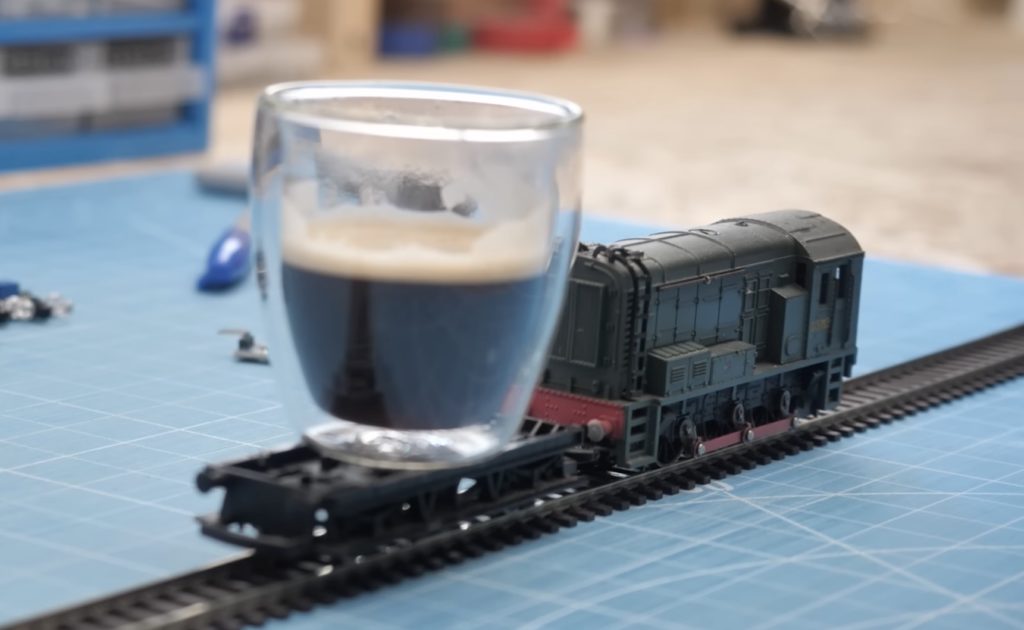
These days, everyone seems to turn to robots for automating tasks in the physical world. But robots are often clumsy and unreliable — not to mention expensive. Trains, on the other hand, are famous for their reliability. With that in mind, YouTuber James Whomsley designed a model train railway to bring coffee from his kitchen to his desk.
Whomsley’s home office is downstairs, but his coffee machine is upstairs in his kitchen. He didn’t want to make that trek every time he needed caffeine, so he constructed a model railroad track that traverses the distance. When he wants a coffee, he activates the train. It leaves his desk carrying an empthy mug on a car, goes to the kitchen, stops at the coffee machine, starts the brewing process, waits until the mug is full, then returns to the desk. That is simple in theory: an Arduino Uno board at each end detects the train and controls power to the rails. But the stairs posed a real challenge.
Model trains receive their power through the tracks, which means that those tracks must make a complete electrical circuit. To move the train on an elevator up and down the stairs, Whomsley had to find a way to break the circuit and then reconnect it. Once again, an Arduino detects the presence of the train. When it does, it activates a motor in a LEGO elevator lift mechanism. That starts moving the elevator platform either up or down, which breaks the circuit. When the lift reaches the top or bottom, it touches contacts to complete the circuit, which restores power and lets the train continue on its journey to deliver bean juice.
The post All aboard the java train! appeared first on Arduino Blog.


